The post If China and the U.S. Must Fight, Taiwan Presents Itself as the Ideal Battlefield first appeared on China Academy.
]]>The post If China and the U.S. Must Fight, Taiwan Presents Itself as the Ideal Battlefield first appeared on China Academy.
]]>The post If China and the U.S. Must Fight, Taiwan Presents Itself as the Ideal Battlefield first appeared on China Academy.
]]>Ding Yifan:Lai Ching-te seems to enjoy testing Beijing’s red lines, as he has openly referred to Taiwan as an independent country and China as its greatest national security threat.
Lai’s statements are intended as a provocation. This year marks the 80th anniversary of the end of World War II, and Taiwan was reclaimed by China in 1945 following Japan’s defeat.
Later, during China’s Liberation War, which was essentially a civil war, the then-ruling Kuomintang (KMT) government was expelled from the mainland and fled to Taiwan, where it entrenched itself.
This means that, in reality, China’s civil war never truly ended. However, at the time, the Communist-led government in mainland China lacked the military strength to reclaim Taiwan, leaving the Taiwan issue unresolved as the U.S. later took the island under its wing.
But the Chinese mainland has long since moved on from where it was during the final stage of its civil war.
If Lai Ching-te seeks to challenge Beijing’s bottom line of national unity now, Beijing will swiftly move on to resolve this historical vestige in a heartbeat—even if it means using force to reclaim Taiwan. China will, sooner or later, have to find a way to bring this matter to a definitive conclusion.
If Lai Ching-te insists on provoking and challenging our bottom line, he is effectively creating an excellent opportunity for us to resolve the Taiwan issue once and for all, permanently ending the civil war and the historical wound.
What Will Beijing Do If the U.S. Interferes with the Taiwan Issue?
Ding Yifan:This is a very good question. I believe that, regardless of the administration in power, the U.S. government lacks the resolve to truly defend Taiwan.
The Pentagon has conducted numerous war simulations with regard to Taiwan, assessing the consequences of U.S. intervention. The conclusion remains the same: the U.S. cannot stop the process.
It is also argued in a recent publication by a U.S. scholar in Foreign Affairs, a highly authoritative journal, that the U.S. should abstain from involving itself in Taiwan, saying that the U.S. shouldn’t go into a war it cannot win.
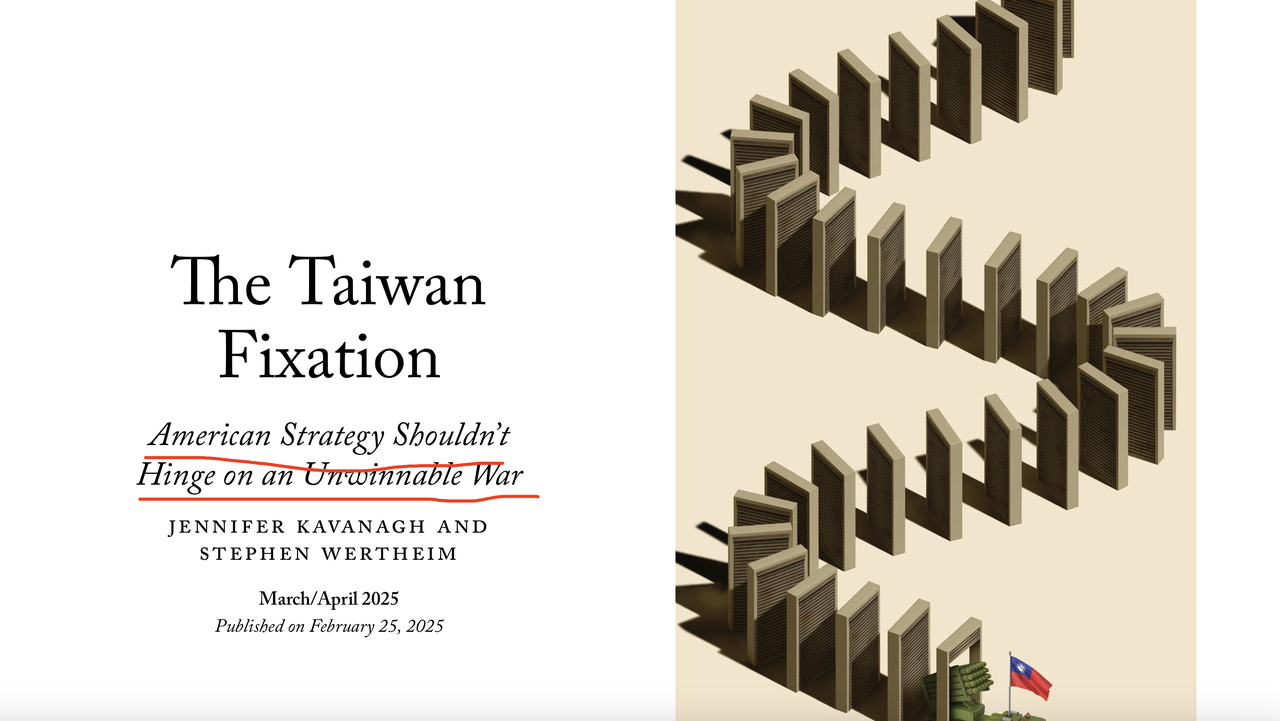
About a decade ago, I hosted a large delegation of retired U.S. Generals. During our discussion of Taiwan, I made my position very clear.
I said that the shifting balance of power between a rising China and declining U.S. anticipates a tipping point that marks the power transition. Given that Taiwan has become a major obstacle in Sino-American relations, and the U.S. views U.S.-China competition as its primary strategic focus, what do you think the tipping point will be?
Historically, such tipping points have always been marked by war. For China and the U.S., such a war will most likely to be fought over Taiwan.
This would be the perfect opportunity for China to draw the U.S. in, defeat the U.S. military over Taiwan, and thereby mark China’s rise and America’s irreversible decline.
What advantages does China have over the U.S. in a Taiwan conflict?
Ding Yifan:From a military perspective, China has at least four decisive advantages:
Manpower – No war can be fought without soldiers.
The ratio of available troops between China and the U.S. is at least 20:1.
The Russia-Ukraine war has already shown that an army with a significantly larger force suffers fewer losses and ultimately wins.
In a Taiwan conflict, even if the U.S. pulls all available troops from other regions, it would struggle to deploy more than 40,000–50,000 personnel in the Taiwan Strait.
China, however, could easily deploy 1 million troops. This manpower ratio alone makes a U.S. victory impossible.
Weaponry – China has the upper hand in missile technology.
China’s medium-range missiles, including hypersonic weapons, far exceed anything the U.S. possesses in this domain.
The U.S. lacks effective defenses against hypersonic missiles. Even if it deployed all 11 aircraft carrier strike groups, they would be rendered ineffective and could even face total destruction.
In terms of weapons, the U.S. has no advantage over China.

Morale – The PLA’s conviction that it fights a just war
The Chinese military is called the People’s Liberation Army (PLA) because Taiwan remains unliberated.
For PLA soldiers, reclaiming Taiwan is their sacred duty, and they will fight with unparalleled determination.
Conversely, how many American soldiers are truly willing to die to defend Taiwan? That is highly doubtful.
Logistics – The U.S. is too far away
War requires strong logistical support, and Taiwan is close to the Chinese mainland.
For Beijing, ensuring supplies and reinforcements is easy whereas for Washington, sustaining a war so far from its home would be extremely difficult.
Therefore, in all four crucial aspects—troop numbers, weapons, morale, and logistics—China has overwhelming superiority. This is why the Pentagon and American experts know that the U.S. cannot afford to lose such a war. If the U.S. is defeated in Taiwan, it will fall from the pedestal that so many countries have placed it on.
It would have to withdraw its military bases from Japan and South Korea, as China would never tolerate American bases so close to its borders.
From this perspective, Lai Ching-te should recognize the situation. If he truly wants China to resolve the Taiwan issue once and for all, he should continue provoking Beijing, giving China the perfect reason to act decisively.
Will China Struggle with Taiwan Separatists Even After Reunification?
Ding Yifan:This is essentially a non-issue. Historically, China has always been adept at handling internal migrations. If certain individuals refuse to accept reunification, they will have two choices:
Leave Taiwan entirely or relocate within China, where the government can resettle them in other regions.
Ultimately, all Taiwanese are Chinese—what is there to fear?
The post If China and the U.S. Must Fight, Taiwan Presents Itself as the Ideal Battlefield first appeared on China Academy.
]]>The post The Countdown to China’s Reunification Has Begun first appeared on China Academy.
]]>
On the 13th of March, Taiwan regional leader Lai Ching-te falsely claimed, “Taiwan is a sovereign and independent democratic country.” In response, Beijing said it would take decisive measures if necessary.
In American political circles, Zbigniew Brzezinski’s book The Grand Chessboard has long been regarded as a strategic bible. The book argues that on the Eurasian chessboard, only significant powers like China and Russia are considered equals to the United States. At the same time, the rest of the countries are either passive observers or pawns—Taiwan island, which is not even a sovereign nation, clearly falls into the latter category.
Chinese strategist Professor Wang Xiangshui once pointed out that pawns can escape their fate of being manipulated either through strength or intelligence. However, Lai Ching-te’s stupidity and arrogance are turning Taiwan island from a pawn meant to contain China into a burden to the United States—a losing piece that will be discarded once it is drained of value.
The arrogance of Taiwan’s separatist figures has always been fueled by the belief that “The US will go to war with China over Taiwan island” and “the U.S. military can definitely defeat the People’s Liberation Army.” However, by 2025, this is nothing more than a double illusion.
On the one hand, the U.S. no longer has the capability to separate Taiwan from China.
For the U.S. Navy, which operates around aircraft carrier strike groups, the premise of any action is securing air superiority. However, by 2025, China’s Air Force has firmly established air dominance in the Asia-Pacific region through three key factors.

First, China has a generation lead over the U.S. in stealth fighter and air-to-air missiles. Second, the 2016 South China Sea standoff proved that China’s reconnaissance drones and satellites can track the location of U.S. aircraft carriers continuously. Most importantly, in 2020 and 2024, China demonstrated two types of long-range anti-ship missiles that can be launched from strategic bombers.
The International Institute for Strategic Studies (IISS) believes these missiles are an air-launched variant of the DF-21 missile. The DF-21 has a range of 1,700 kilometers when launched from the ground, and the War Zone magazine suggests that its range could extend to around 6,000 kilometers when launched from the air.

To put it into perspective, the distance from Beijing to Hawaii is only about 8,100 kilometers. This means China’s bombers, by hovering over their own territory, are Able to prevent US aircraft carriers from entering most of the Western Pacific.
Additionally, the DF-21 is a ballistic missile that reaches speeds of up to 10 Mach in its terminal phase. U.S. defence systems’ track record in Ukraine shows they cannot even intercept Russian Kinzhal missiles travelling at 5.9 Mach.
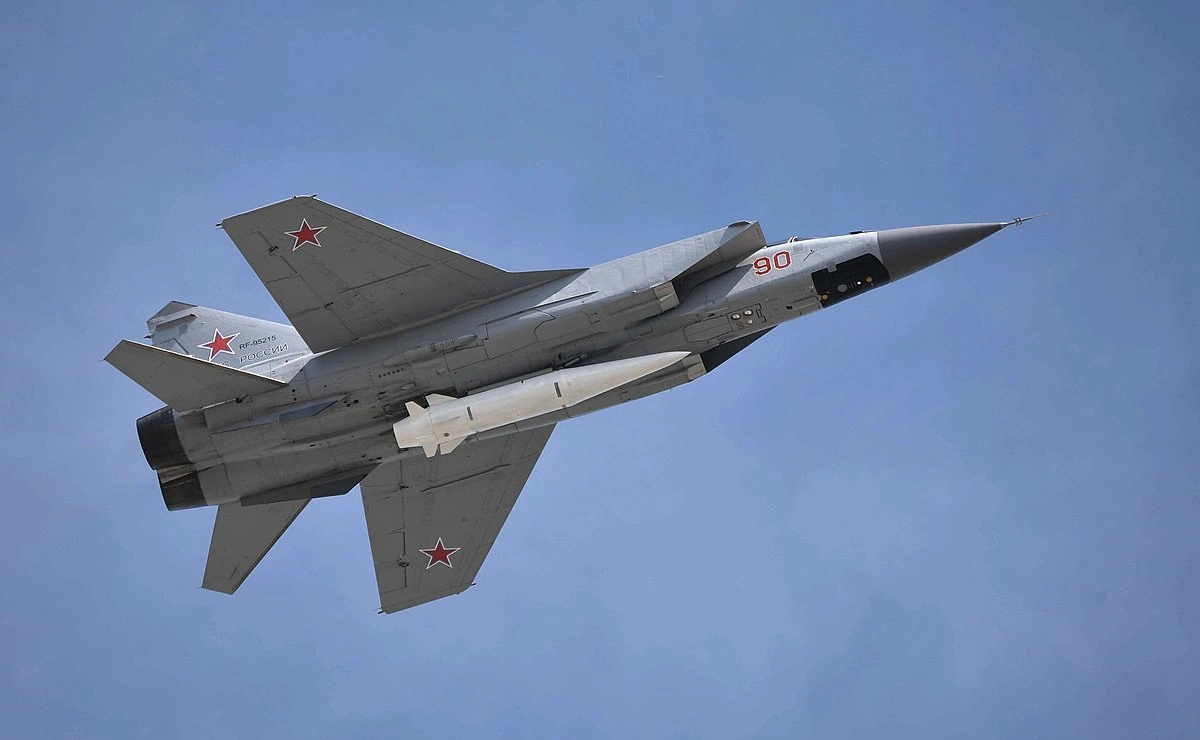 According to the Russian Defense Ministry, the Kinzhal hypersonic missile completely destroyed five launchers and a multifunctional radar station of the US-made Patriot air defense system in 2023
According to the Russian Defense Ministry, the Kinzhal hypersonic missile completely destroyed five launchers and a multifunctional radar station of the US-made Patriot air defense system in 2023
In fact, faced with China’s air superiority, the U.S. military has no desire to engage and is only focused on survival. In October 2024, the Wall Street Journal revealed that the Pentagon had shifted its strategic focus in the Asia-Pacific to “Scatter and Survive.” On January 30, Stars and Stripes reported that U.S. military pilots stationed in Guam were being evacuated into the jungle and were being trained on how to survive without supplies. Sam Roggeveen, director of the international security programme at Australia’s Lowy Institute, pointed out that this signals the U.S. military no longer aims to win a war with China, with survival now being the only remaining strategic objective.
Ukraine has demonstrated over the past three years that the U.S. military dares not directly face an adversary of the same weight class. Given the latest moves of the U.S. military, Lai Ching-te, living on a small island, is destined to be even more isolated and unsupported than Zelensky.
On the other hand, Taiwan island has now lost its strategic value in the eyes of the United States.
Taiwan Island once held two key strategic values for the U.S. One was its role as a critical node in the First Island Chain, providing fleet support in times of conflict. The other was its semiconductor industry, particularly Taiwan Semiconductor Manufacturing Company Limited (TSMC), which occupied an essential position in the global supply chain, even leading some separatists to believe that China would hesitate to reunify Taiwan by force because of the economic damage it would inflict on chip production. However, these two strategic advantages have now significantly diminished or even disappeared.
First, with advances in marine propulsion systems, warships’ operational ranges are increasingly independent of supply chains. While China lacks military bases in the Pacific, its conventionally powered destroyers have conducted live-fire exercises and circumnavigated Australia in the South Pacific. As more navies move toward nuclear propulsion, the importance of forward bases will only decrease.
Second, while separatist figures in Taiwan regard TSMC as their shield, TSMC itself wants to distance itself from them. In 2020, TSMC began setting up factories in the U.S., Japan, and Germany, relocating production capacity. Due to Trump’s threat of imposing additional tariffs on chips produced in Taiwan, TSMC moved its most advanced production lines to Arizona. Recently, TSMC invested $100 billion to expand its U.S. factories, sparking panic in Taiwan.
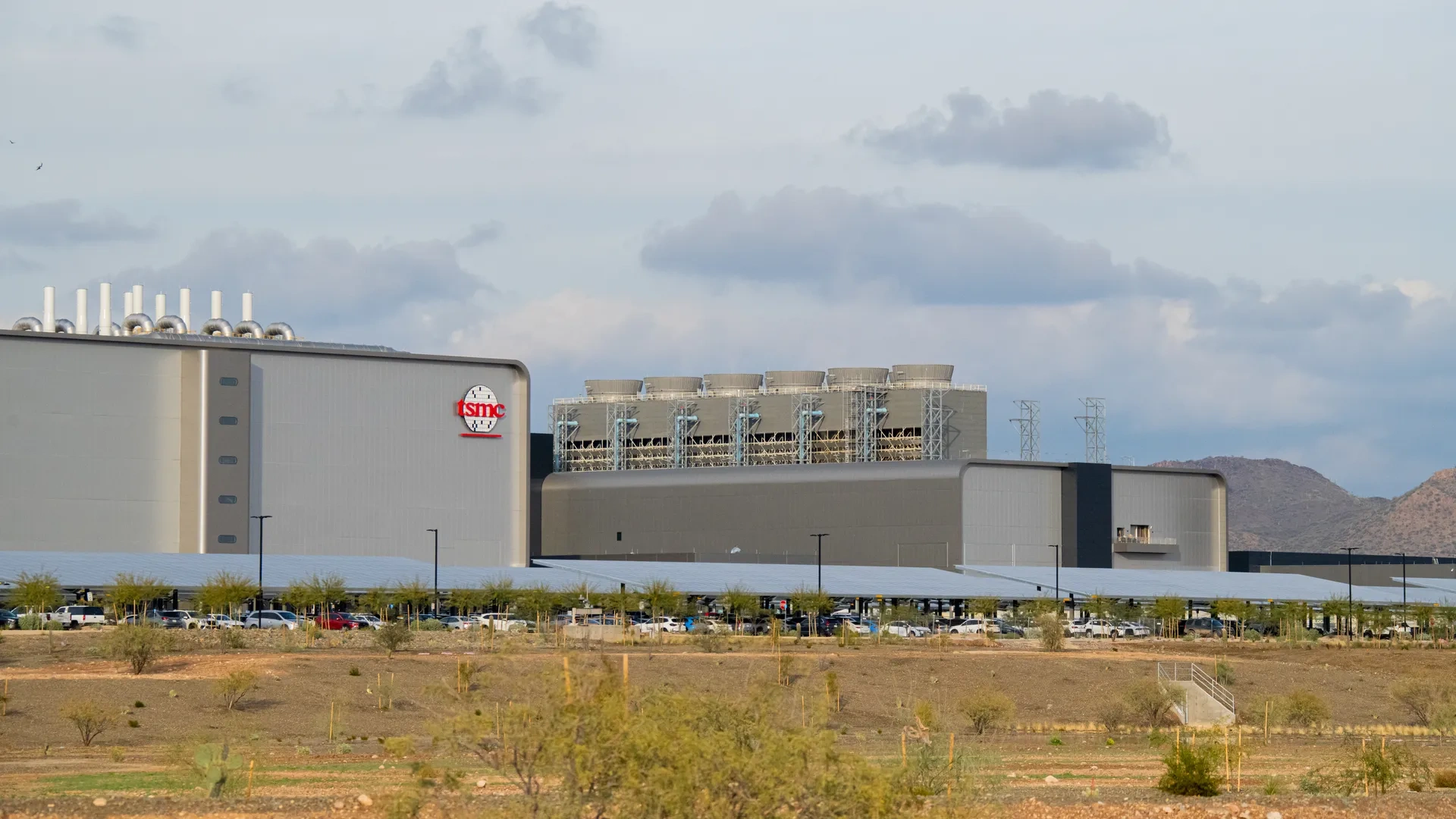 The TSMC facility in Phoenix, in 2023.
The TSMC facility in Phoenix, in 2023.
This illustrates that Taiwan’s strategic value to the U.S. is rapidly depreciating, while the risks of intervening in the Taiwan Strait are sharply increasing. For businessman-turned-president Donald Trump, this is a no-brainer. On February 26, in his first cabinet meeting after returning to the White House, Trump explicitly stated that the claim “China cannot reunify Taiwan island as long as I am president” was a rumor, and he expressed a preference for improving relations with Beijing while eagerly anticipating increased Chinese investments in the U.S.
For China, there is nothing to be grateful for Trump’s remarks, because as early as 1979 when the US signed the “Joint Communiqué on the Establishment of Diplomatic Relations”, Washington admitted that there is only one China in the world and Taiwan is a part of China.
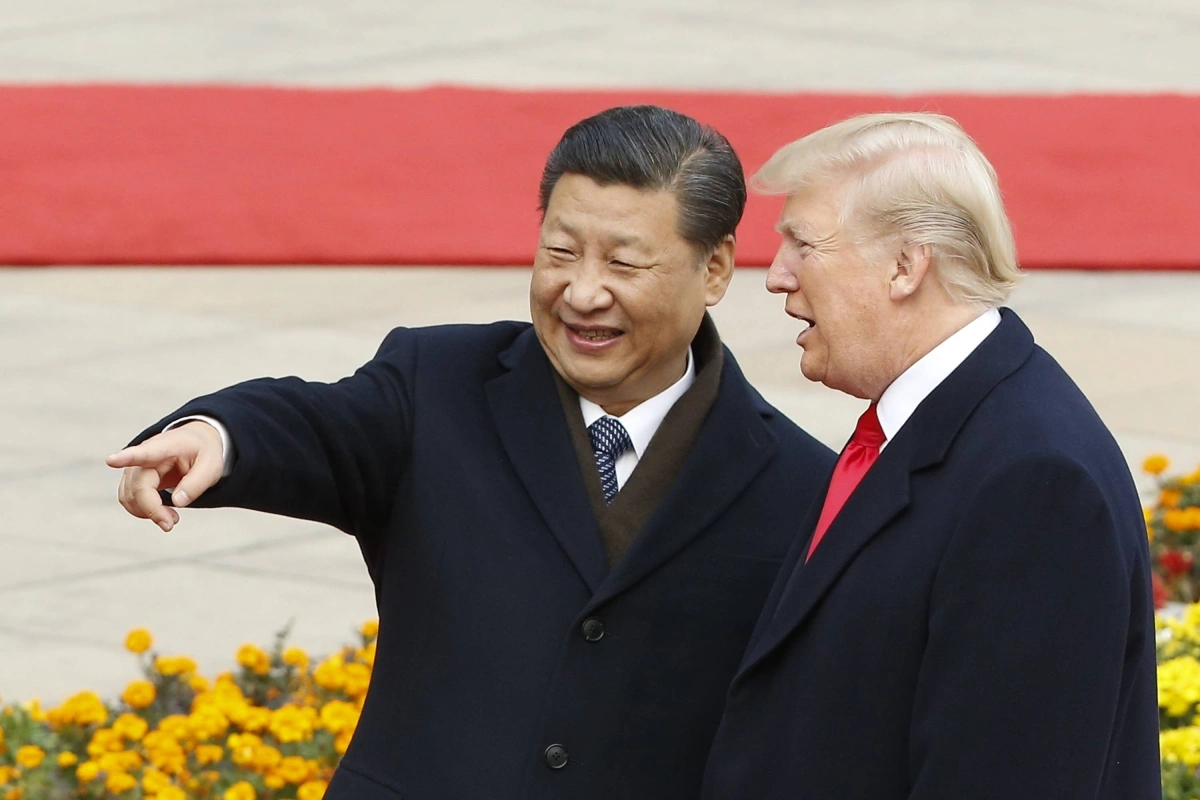
In fact, On the Taiwan Question, China has never cared what the US thinks. In 2022, it is already a foregone conclusion that Lai Ching-te will be the last so-called “president” of China’s Taiwan province. China’s “2022 National Highway Network Plan” made it clear that a rail link between Beijing and Taiwan would be completed by 2035, connecting the mainland with Taiwan island via a bridge more than 200 kilometers long.
Considering that China’s longest cross-sea bridge, the Hong Kong-Zhuhai-Macao Bridge, took nine years to complete, Taiwan separatists have little time left to face reality. On March 6, Chinese Foreign Minister Wang Yi once again emphasized that the only legitimate designation for Taiwan is “China’s Taiwan Province.”
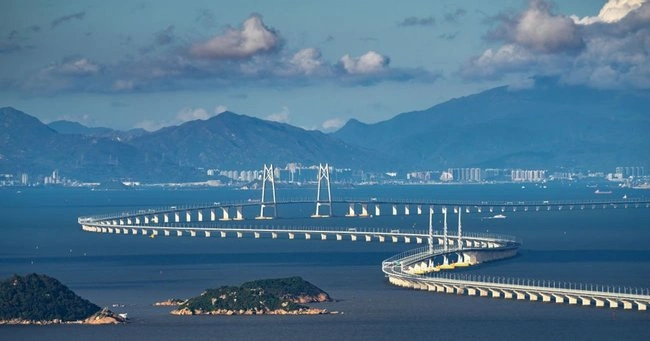
As early as two thousand years ago, the ancient Chinese text Han Feizi warned: “An administration weak in power yet unafraid of stronger forces, discourteous towards greater neighbours, and governed by greed, obstinacy, and inept diplomacy, is doomed to perish.” Taiwan separatists’ current actions—recklessly repudiating Chinese heritage through “de-Sinicization” campaigns, even disparaging traditional Chinese culture—reveal precisely such a deficiency in this ancestral wisdom.By severing themselves from these foundational principles, Lai sets a path toward self-destruction that looms ever more ominously.
The post The Countdown to China’s Reunification Has Begun first appeared on China Academy.
]]>The post Beijing Sanctions Lockheed Martin Over Taiwan Arms Sales first appeared on China Academy.
]]>
On January 2, China announced a new round of sanctions against 10 U.S. arms companies, including 28 subsidiaries and laboratories owned by Lockheed Martin and General Dynamics.
They are prohibited from purchasing any resources from China, which is expected to deliver a severe blow to the U.S. military’s supply chain. According to MIT, China supplies 97% of the world’s rare earth resources, a group of 17 rare metals essential for critical military equipment, such as fighter jet engines, naval sonar systems, and tank-mounted laser rangefinders. With these sanctions, the repair and replenishment of high-tech weapons could become significantly more challenging for the US military, effectively turning them into expensive “disposable items.”
The Chinese Ministry of Commerce stated that these sanctions responded to these US arms sales to Taipei. Chinese strategist Professor Wang Xiangsui remarked that China is “giving the US a dose of its own medicine.” More importantly, it serves as a reminder to the U.S. that the era of unilaterally wielding the sanctions baton is over. In the context of a multipolar world, any attempt to preserve unipolar hegemony is destined to fail.
However, recent developments in Japan and Australia suggest that even without China’s sanctions, the U.S. plan to arm Taiwan is doomed to fail. This failure is not only due to operational issues but also the resulting diplomatic fallout with allies.
On the one hand, Australia has highlighted the US is abandoning Taiwan island.
The primary goal of supplying weapons to Taiwan is to maintain the so-called “First Island Chain” to contain Mainland China. In this MacArthur-designed strategy, Taiwan island plays a central role as an “unsinkable aircraft carrier.” This strategy dates back to 1955 when President Eisenhower declared the U.S. would “protect Formosa and the Pescadores against armed attack” by force.
However, current U.S. military actions reveal a lack of confidence in fulfilling this commitment. According to the South China Morning Post, the U.S. Air Force has begun dispersing forces originally stationed at major bases such as Guam to smaller, previously abandoned island airstrips to avoid being wiped out by Chinese missiles.
Sam Roggeveen, director of the international security programme at Australia’s Lowy Institute, noted that this shift reflects the U.S. military’s primary focus in Asia: not building a presence in Asia that is designed to win a war against China. Its strategy is designed merely to survive.
This purely retreat plan has also been exposed by The Wall Street Journal. The U.S. Air Force(USAF) is reactivating an airbase on Tinian Island, over 2,100 kilometres from Taipei and 2,400 kilometres from Tokyo.
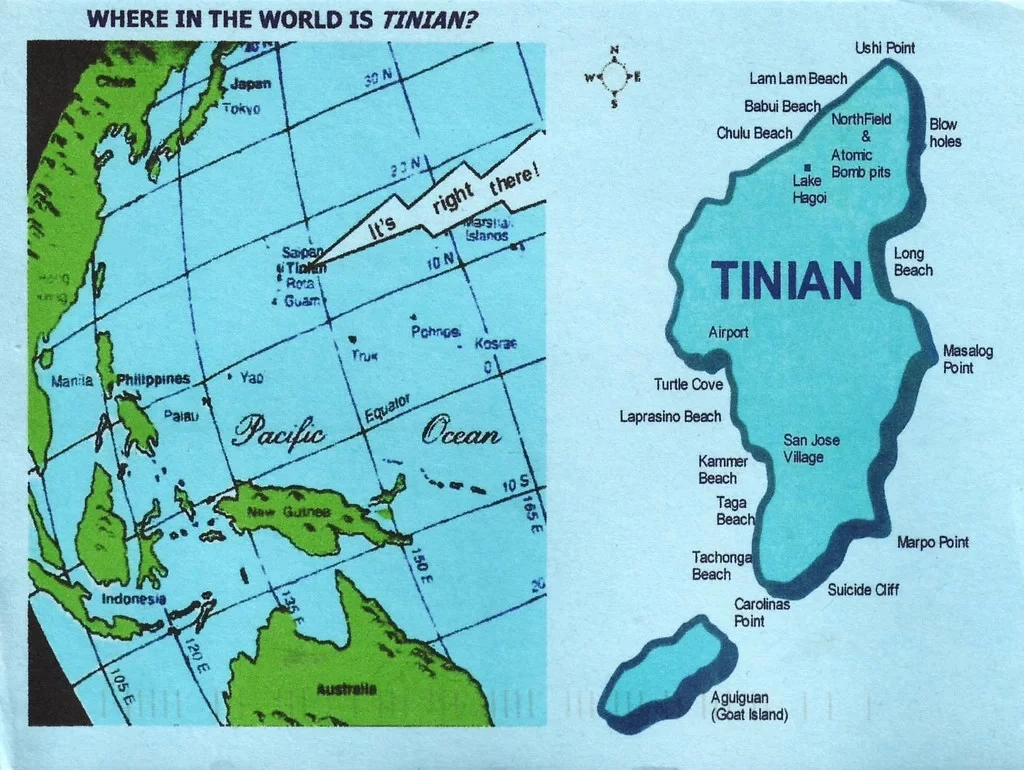
According to the official website of the USAF, the F-16 fighter jet has a maximum operational radius of fewer than 900 kilometres when performing surface attack missions. It can achieve a maximum range of about 3,900 kilometres when carrying only external fuel tanks and not armed with weapons. This means that if the airport in Guam is destroyed, even if these aircraft are preserved, the USAF will be unable to provide any air support to allies. Once the U.S. Air Force decides to “survive” beyond the first island chain, it will never return.
Additionally, on December 26, 2024, China unveiled two sixth-generation stealth fighter jets, further solidifying its military advantage in the Taiwan Strait and presenting a significant challenge to the U.S. military. Facing an adversary with technological capabilities on par with—or even surpassing—its own is an unprecedented scenario for the U.S. Air Force since World War II. Without the ability to secure an asymmetric advantage through superior weaponry, does the United States still have the strength to challenge China’s sovereign boundaries, and uphold its increasingly illusory global hegemony?
On the other hand, Japan has also recognized Whitehouse’s Taiwan strategy is doomed to fail.
In July 2021, Japanese Deputy Prime Minister Taro Aso openly declared that Japan and the United States must work together to defend Taiwan island. This was because, just a month earlier, they had conducted the largest-ever Orient Shield joint military exercise, with one of its key parts being an anti-missile drill. This gave Japan the illusion that intervening in China’s Taiwan question was a risk-free venture.
However, a Chinese intercontinental missile test in September 2024 shattered this illusion. Despite prior notification from China, U.S. radar systems stationed in Taiwan island failed to track the missile’s trajectory and landing site.
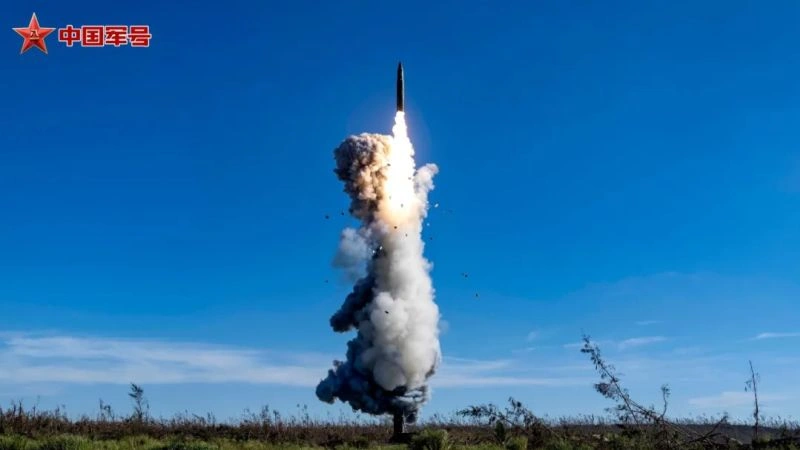
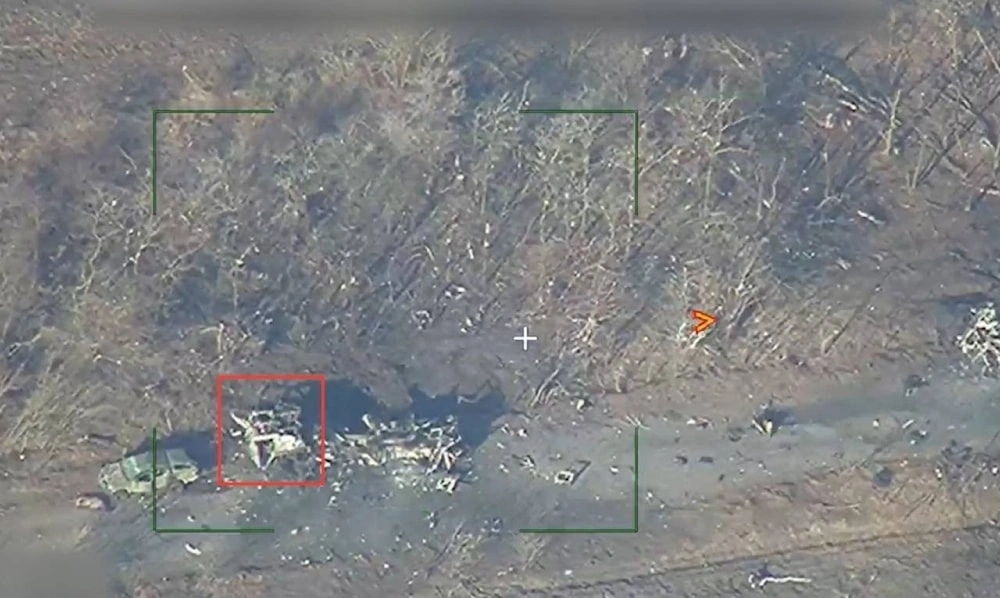 Russian Iskander missile destroys 2 US Patriot systems in Donetsk
Russian Iskander missile destroys 2 US Patriot systems in Donetsk
This failure, coupled with the real combat records in Ukraine, led Japan to reevaluate the risk of interfering Taiwan Question. Now the US reluctance to share risks with Japan further underscored its trustworthiness. In late December 2024, Japanese Prime Minister Shigeru Ishiba postponed a planned visit to the U.S., instead emphasizing the importance of improving relations with China.
For the allies of the US, Clearly, its Taiwan strategy is doomed to fail. And the only winners are the US arms manufacturers.
Taiwan arms sales have exceeded $26 billion during the Trump and Biden administrations—these sales increasingly appear to benefit US officials. For example, General Dynamics, which supplied M1A2T tanks to Taipei, has spent over $10 million annually on lobbying, with expenditures growing steadily since 2019.
Fortunately, China’s precise sanctions on U.S. arms companies make arms sales to Taiwan an increasingly unprofitable venture. This shift could redirect U.S. taxpayer funds to more pressing needs, such as healthcare and outdated infrastructure.
The post Beijing Sanctions Lockheed Martin Over Taiwan Arms Sales first appeared on China Academy.
]]>The post It’s Time for the U.S. to Exit the Asia-Pacific | Amb. Chas Freeman first appeared on China Academy.
]]>The post It’s Time for the U.S. to Exit the Asia-Pacific | Amb. Chas Freeman first appeared on China Academy.
]]>The post The U.S. Threatens a Drone War in the Taiwan Strait— Seriously? first appeared on China Academy.
]]>The U.S. seems aware of its own limitations—namely, that it lacks the production capacity to back up its bold claims, even if it prides itself on having the technology.
Just days ago, a group of 26 drone manufacturers gathered in Taiwan to discuss potential drone production. It seems like a good place for it, because Taiwan’s labor costs are lower than the U.S., and it has a better manufacturing base, from brands like Giant bicycles to its chip-making capabilities.
The island could churn out drones for the U.S., no problem. But what wasn’t clear from the reports is whether Taiwan would simply be supplying parts or if this would be a “Made in Taiwan, labeled in the U.S.” situation—probably a mix of both.
Taiwan’s authority, however, threw a bit of cold water on things, suggesting that drones produced in Taiwan might not carry a Taiwanese brand but could just be part of the global supply chain. This set off a flurry of outrage on the island. “The whole world is making drones—Iran is exporting them to Russia—and now Taiwan can build them but not even slap its own label on them?”
But that’s not the island’s biggest concern.
During the Ukraine war, the U.S. sent over what it considered to be a large number of drones. But when you compare that to the sheer volume of drones produced by DJI, a Chinese tech giant, and used by Ukrainian forces, the U.S. numbers seem pretty modest. This is because American drones underperformed on the battlefield—easily jammed, unreliable, and sometimes simply failing to operate. In the end, Ukrainian troops found themselves relying on DJI drones—cheaper, more reliable, and now a staple in the drone world.
 DJI drone
DJI drone
Meanwhile, the Switchblade drones produced by U.S. military supplier AeroVironment were criticized by Ukrainian troops.
The Switchblade is a miniature loitering munition used by various branches of the U.S. military. Small enough to be carried in a backpack, the Switchblade is launched from a tube, flies to its target area, and crashes into the target, detonating its explosive warhead upon impact.
The Switchblade comes in two models: the smaller 300, which is similar to a guided mortar round that a single soldier can use, and the larger 600, which can take out tanks and armored vehicles. But even the 600, with its 110 km/h speed, 40 km range, and 40-minute flight time, pales in comparison to China’s loitering munitions produced by NORINCO, a state-owned defense corporation. These Chinese drones have a speed of 144 km/h, a range of 200 km, and can cruise for 105 minutes—enough to strike Taiwan island from mainland China.
 Switchblade 300
Switchblade 300
Sure, a flight time of an hour and a half is a bit long, but for fixed targets, it’s good enough. Whether that communication tower gets hit at 8:00 or 9:30 doesn’t make much of a difference.
And even for targets farther south in the strait, these drones could be launched from almost any vessel. As long as they don’t nosedive into the water, they’re good to go—launch conditions are almost irrelevant.
The U.S. is selling 1,000 “Switchblade 600” drones to Taiwan for $990 million, or about $990,000 per unit. Taiwan has long been accustomed to playing the fool in such deals, but this price for loitering munitions is outrageous—at nearly $1 million per unit, you’re approaching the cost of a Tomahawk cruise missile. Even the launch and fire control systems are excessively priced, despite the fact that loitering munitions require only simple launch mechanisms, and the fire control system is equally uncomplicated.
 Switchblade 600
Switchblade 600
If NORINCO’s “Chinese Switchblade 600” were priced at 1 million RMB (about $137,000), it would only be one-seventh the cost of the American version. However, if it were released to the market, such a price would undoubtedly attract a flood of buyers, leading to the familiar criticism of overcapacity, much like China’s electric vehicles. In reality, even at 100,000 RMB ($13,700) per unit, that’s still an overcharge.
For comparison, Iran’s Shahed drones reportedly cost only $20,000, and they boast a range of 2,500 kilometers, though it’s too large and cumbersome for deployment and launch.
Cost is China’s secret weapon in the arms race. A U.S. C-17 transport plane costs $340 million, while China’s Y-20 costs $160 million—a 2.12 times difference. An Arleigh Burke-class destroyer costs $2.2 billion, compared to China’s 055 destroyer at $1 billion—a 2.2 times difference. And while the C-17 is arguably larger and more advanced than the Y-20, the Burke-class can’t compare to the 055—it’s far behind.
 Chinese Type 055 guided-missile destroyer Nanchang
Chinese Type 055 guided-missile destroyer Nanchang
One of the biggest lessons from the Ukraine war is that quantity sometimes matters more than quality.
China’s military believes “quantity is quality,” but it also believes “quality is quality.” You need both to win.
This isn’t just about winning a war but winning it with minimal losses. After all, isn’t it better for future generations to hear stories from their grandfathers rather than pay respects at a cemetery?
China’s new generation of military equipment is catching up to or surpassing the U.S. in performance, while beating the U.S. in cost and quantity. This is the true meaning of “acting from a position of strength,” a phrase that the U.S. government once frequently used when engaging with China.
In fact, F-15s and F-16s had dominated Soviet aircraft in both quality and quantity for years. And the Aegis system came out decades before anyone else’s and still leads in numbers. From the Los Angeles-class to Virginia-class submarines, the U.S. always had the edge in numbers and capability.
But now, China’s quietly turning the tables. Since 2010, China’s newly launched warships have surpassed the U.S. in tonnage, not just in number. The J-20 fighter jets have outnumbered the U.S. F-22s. China’s Y-20 fleet is approaching 100 aircraft—still fewer than the C-17, but give it time. The Y-20B, equipped with WS20 engines, is just rolling off the line, and with refueling aircraft, China could easily surpass the U.S. fleet.
 Chinese J-20s on the runway
Chinese J-20s on the runway
China started late, with a weak foundation, lagging technology, and limited imagination. It had no choice but to compete on price, squeezing every margin. When price competition hits a ceiling, China shifts to differentiation. When that no longer works, they move to cutting-edge tech. But even today, while China has gained an edge in quality, it still manages to maintain a competitive advantage in pricing.
This relentless competition, beginning with basic technology and advancing all the way to military hardware, now seems to be heading toward a scenario with only one likely winner. As the old Chinese saying goes: “When my flowers bloom in September, all other flowers will wither.”
The post The U.S. Threatens a Drone War in the Taiwan Strait— Seriously? first appeared on China Academy.
]]>The post John Mearsheimer: If I Were in Beijing, US Would Already Be Kicked Out of Asia first appeared on China Academy.
]]>The post John Mearsheimer: If I Were in Beijing, US Would Already Be Kicked Out of Asia first appeared on China Academy.
]]>The post When asked Is US Primed for War with China in Taiwan? Chinese Scholar Laughs first appeared on China Academy.
]]>People were particularly interested in three main questions: First, what are the prospects for China’s peaceful reunification? Second, what will happen if the United States uses force to prevent China from unifying with the Taiwan region? Third, how will Taiwan be governed after national reunification, and will the “One Country, Two Systems” policy still be implemented?
Regarding the first question, many people expressed that for various reasons, the voices advocating for unification in Taiwan are diminishing. More people are either supporting ” independence explicitly” or supporting ” independence implicitly”
A Malaysian scholar asked me, “If this trend continues, the ‘Taiwan independence’ forces might keep winning in future ‘general elections.’ How, then, can peaceful unification be achieved?” Upon hearing this, I smiled and asked him: “Have you considered another possibility, that Taiwan may not have another so-called ‘general election’?” I continued, “The unification of our country has entered the fast lane. In this year’s government work report, the Chinese Premier used different wording when discussing national unification.
In the past, the concluding phrase was almost always ‘promoting the peaceful reunification of the motherland.’ However, this time it was changed to ‘promoting the reunification,’ without the word ‘peaceful.’ In other words, we are fully prepared for all possibilities.”
I also briefed him on the incident during the Chinese New Year when two fishermen from Fujian died under circumstances attributed to Taiwan. In response, the Chinese Coast Guard immediately began regular law enforcement patrols in the waters near Kinmen. The so-called “restricted waters” and “prohibited waters” established by the Taiwan authorities ceased to exist. I believe these patrols will soon extend to areas like Penghu, as we have no intention of turning back.
I have often expressed the view that “Taiwan independence” forces only understand the logic of strength. That’s why the Chinese Coast Guard’s recent action of boarding a Taiwanese yacht to check licenses and documents was highly effective. The whole Taiwan region now knows, the Mainland is getting serious. I have always believed that the longer unification awaits, the more limited Taiwan’s choices will be.
Moreover, there are many options remained between peaceful and non-peaceful reunification, all backed by the unwavering will of 1.4 billion Chinese people. It is time for Taiwan to return to the motherland, and we will not allow this issue to be indefinitely delayed.
For instance, we have already planned a high-speed railway to Taiwan, and it is typical of the Chinese government to complete such projects ahead of schedule. I also mentioned that after the recent tragic incident where Fujian fishermen lost their lives, Taiwan became genuinely anxious, fearing that the Mainland might take decisive action, even military force. In response, they proposed a so-called “war tax.” When the Green Camp (Democratic Progressive Party) media interviewed people on the streets of Taipei, they found that everyone was opposed to war. Many even said that if “armed reunification” began, they would immediately “embroider the red flag,” meaning they would quickly give in and pledge allegiance.
As for the second question, what should we do if the United States intervenes in the Taiwan Strait by force? My basic judgment is that the United States has neither the ability nor the guts to do so.
 Biden says he won’t rule out use of U.S. military to defend Taiwan.
Biden says he won’t rule out use of U.S. military to defend Taiwan.
Take a look at NATO, consisting of more than thirty countries, now getting difficult to sustain the Russian-Ukrainian conflict alone. A primary cause lies in the major Western powers indulging in the financialization of their economies for a long time, leading to de-industrialization.
I cite the report of the United States Naval Department: China’s shipbuilding capacity today is 232 times larger than that of the United States, and the tonnage of ships launched by the United States each year is 0.1 million tons when that of China is 23.2 million tons. How are they going to fight this battle?
In 2022, after Nancy Pelosi visited Taiwan, we imposed a military blockade on the island. The United States warships were required by the PLA to stay outside the 1,000-nautical-mile limits, and they kept their warships there without a word.The United States, which is already in hot water, needs to show global presence, or else its own allies will look down on it. Meanwhile, it also begins to realize how unprecedentedly vulnerable it is right now.
The U.S. is in the weakest moment since World War II. Both its hard power and soft power have declined so much that the Houthis, being nicknamed the ” slippers army” for their crude equipment, have dared to fire missiles at U.S. destroyers and U.S. aircraft carriers non-stop.
While China has the highest threshold among the world’s major powers for using force, the bottom line is clear. We will always strike when its needed, and once we do, we are always the decisive force that turns the situation.
I’ve also told our Russian friends that during the Cold War, no hot wars happened between the United States and the Soviet Union, but two hot wars happened between the United States and China, the Korean War and the Vietnam War, in which the United States lost both.
The third question is: After unification, how will the Taiwan region be governed? Will the “One Country, Two Systems” policy be used in Taiwan? I believe that in addressing such issues, it is crucial to demonstrate a high level of institutional confidence and confidence in our path.
Some argue that resolving the Taiwan issue militarily is not challenging, but the real challenge lies in governing Taiwan, particularly in how to eradicate the forces and ideologies of “Taiwan independence”.
In reality, there has been a monumental shift in the strengths of both sides of the Taiwan Strait, driven by our institutional advantages and Taiwan’s institutional shortcomings.
In the early stages of Taiwan’s so-called democratization, around the late 1980s, the size of Taiwan’s economy was approximately 45% of mainland China’s. Fast forward more than three decades, today Taiwan’s economy is less than 4% of the mainland’s, based on the official exchange rate. Adjusted for purchasing power parity, the gap widens even further. In my assessment, the mainland’s developed regions exhibit a higher level of modernization, overall living standards, and governance compared to Taiwan.
While some argue that eliminating the influence of the “Taiwan independence” ideology is challenging, I believe this ideology will not endure for long. It lacks significant cultural and historical roots, as well as a solid legal foundation.
Over the past three decades, the “Taiwan independence” forces have been able to act with impunity for various reasons, leading to the widespread dissemination of “Taiwan independence” ideology. This situation brings to mind the era before World War II when Fascism flourished in Germany, but swiftly crumbled with the downfall of Hitler’s regime.
While it is crucial to be well-prepared and strategize before taking action, I have delved into studying the Chinese model extensively. One notable characteristic of our model is that we do not wait for perfect conditions before initiating action.
When we identify the overarching direction, we seize every opportunity, boldly exploring and moving forward. We often learn through practice, adapt to challenges as they arise, and grow through the struggles. In the end, all issues find resolutions.This approach drives our Reform and Opening-up, as well as our “Belt and Road” initiative.
Regarding the “One Country, Two Systems” arrangement, we have always viewed it as a sound institutional framework. However, since Taiwan has consistently rejected it, why should we confine ourselves needlessly? We will undoubtedly adapt to the changing times and break free from the “One Country, Two Systems” model when necessary.
The post When asked Is US Primed for War with China in Taiwan? Chinese Scholar Laughs first appeared on China Academy.
]]>The post Chinese Scholar: I’d Rather Confront with Extreme Taiwan Independence Advocates first appeared on China Academy.
]]> Lai Qingde has publically announced his “new two-country theory” in his speech.
Lai Qingde has publically announced his “new two-country theory” in his speech.
The most exciting news is that on 21st June, “Opinions on the Lawful Punishment of the Offence of Splitting the State and Inciting Splitting the State by the Intransigent Advocates of Taiwan Independence” is issued by China’s “Two High Churts and Three Ministries” (i.e., the Supreme People’s Court, the Supreme People’s Procuratorate, the Ministry of Public Security, the Ministry of State Security, and the Ministry of Justice) combined, and it’s effectiveness starts on the day of issuance. Immediately it became a sword of Damocles hanging above the forces of “Taiwan Independence”, such significance is unable to be estimated. Regarding the offense of splitting the state committed by the “Taiwan Independence” advocates, the document has raised four provisions of specific circumstances and one miscellaneous provision, along with the sentencing standards. The maximum sentence is death penalty or life imprisonment.
The four provisions of specific circumstances are very comprehensive. First, initiating or establishing a separatist organization for “Taiwan Independence”, formulating programme, plans, schemes, etc. for separatist actions of “Taiwan Independence”, and directing members of a separatist organization for “Taiwan Independence” or other persons to carry out activities splitting the state or undermine state unification. Second, attempting to change the legal status of the Taiwan region as part of China by enacting, amending, interpreting, or repealing the relevant provisions of the Taiwan region, or through a referendum. Third, attempting to create “two Chinas,” “one China, one Taiwan,” or “Taiwan independence” in the international community by promoting the Taiwan region’s membership in international organizations whose membership is restricted to sovereign states, or by engaging in official exchanges or military contacts with foreign countries. Fourth, using one’s official position to distort or falsify the fact that the Taiwan region is part of China in such fields as education, culture, history, and news media, or to suppress political parties, groups, or individuals who support the peaceful development of cross-strait relations and national reunification. Finally, a remarkable fifth item under the hood: “other acts of attempting to split the Taiwan region from China”.
All of this means that the iron fist of China’s people’s democratic dictatorship will press down all kinds of stubborn advocates of “Taiwan independence” without any blindsight. A commentator on Taiwan’s current affairs, Qiu Yi, made the following comments: some people rely solely on that they are “cowering in Taiwan, never going to the mainland, so nothing can be done to them”. And now that trial in absentia is stipulated, courts in the mainland, based on the relevant treaties signed with other countries, the relevant regulations on extradition, and so on, will be able to pursue one’s responsibility lifelong. Those “Taiwan Independence” intransigents “should be shivering in their home right now”.
Another significance of this document is that as a relevant content of the Criminal Law of the PRC, it is now applicable to Taiwan region and Taiwan residents. Allowing courts in the mainland to conduct trials in absentia has substantially surpassed the “One Country, Two Systems” policy. This differs from Hong Kong and Macao, which practice their own law according to the “One Country, Two Systems” policy. This document now refers to Article 103 of the Criminal Law of China, the offense of splitting the state and inciting splitting the state. Yet we can reason from that since Article 103 is now applicable to Taiwan, other provisions such as Article 106 which stipulates the punishment for collusion with foreign countries, and Article 107 which stipulates the crime of financing criminal activities that jeopardize national security, may also apply to Taiwan in the future.
All in all, these are all signs that the process of reunification has entered the fast lane. This is a manifestation of the firm will of the 1.4 billion Chinese people, who all are expecting an early arrival of our reunification. Indeed, since our jurisdiction is already partially applicable to the Taiwan area, will the day of reunification still be far?
The post Chinese Scholar: I’d Rather Confront with Extreme Taiwan Independence Advocates first appeared on China Academy.
]]>The post China’s Unification Process Has Already Begun first appeared on China Academy.
]]>In addition, Dong Jun, China’s Minister of National Defense said “Whoever dares to separate Taiwan from China will certainly be doomed and bring about their own destruction,” attracting great attention.
It’s worth mentioning that during the inauguration speech of Taiwan’s leader Lai Ching-te on May 20, the idea of “Taiwan independence” was presented in an extraordinarily explicit manner, which China’s Taiwan Affairs Office defined as the “Taiwan Independence Manifesto.” It is common knowledge that Lai’s remarks this time are approved by Americans, suggesting that the United States is ready to actively contain China by manipulating Taiwan. Previously, many believed that the US treated Taiwan as a card to be played to a limited extent but given the current posture, it seems prepared for a direct confrontation with China, which is more dangerous. As a result, China had to respond strongly through the “Joint Sword-2024A” military drills.
 Lai Ching-te
Lai Ching-te
Moreover, some groups of US congressmen visited Taiwan several times without authorization arrogantly. They bet that China won’t deal with them using military approaches. This assumption is somewhat true but underestimates the Chinese government’s resolve to achieve complete unification. For China, the Taiwan Question touches upon the most critical core interests — it is the “line in the sand”. That’s why China sends clear signals and warnings continuously, including conducting military exercises around Taiwan and engaging in diplomatic negotiations.
At the Taiwan Affairs Office press conference on May 29, a reporter from Taiwan’s “China Times” asked spokesperson Zhu Fenglian “Is there no going back for cross-strait relations?” Zhu replied, “The question of ‘no going back’ is a false proposition. Cross-strait relations have been continuously moving forward, towards the direction of unification.” This statement revealed quite a lot of information.
Personally, I believe that China’s unification process has already begun. However, the central government has considered unification by force as a choice in the toolbox by far. Over the years, there have been consistent official declarations of “We are patient, willing to strive for the prospect of peaceful unification with utmost sincerity and effort.”
However, now that the United States has completely burned its bridges and openly manipulated Lai Ching-te to test China’s bottom line, the likelihood of a regional conflict has greatly increased. China must prepare for the possibility of unification by non-peaceful means.
Taiwan is an integral part of China, with historical roots dating back many years. If you are interested in Chinese culture, it is important to know the story of the Three Kingdoms, known as “San Guo Yan Yi” in Chinese. One of the kingdoms, Dong Wu, was led by Sun Quan. During that time, Sun Quan dispatched his general, Wei Wen, to Taiwan and asserted sovereignty over the island. This claim of sovereignty can be traced back nearly 2,000 years. From the Chinese perspective, Taiwan has been considered part of China since Sun Quan sent Wei Wen to Taiwan. However, in modern history, Taiwan was temporarily separated from China when the Qing dynasty was defeated by the Japanese Empire in 1894 during the Jia Wu war. After the end of World War II, Taiwan returned to China and regained its status as part of China.
There is a document called the Cairo Declaration, signed by three world leaders at the time: Franklin Roosevelt, the President of the United States; Winston Churchill of Great Britain; and Mr. Chiang Kai-shek, the leader of the Republic of China at that time. According to the Cairo Declaration, Japan must return all the territory they seized from China. This document holds great importance in international law. Two years later, in the famous Boston Protocol, the stance of the Cairo Declaration was fully accepted. The Boston Protocol demanded that the Japanese Empire return all the territory, including Taiwan, back to China. On August 15th, 1945, the Emperor of Japan fully accepted the requirements of the Boston Protocol.
In 1950, Taiwan separated from mainland China, not due to invasion or the impact of international law, but because of the civil war. Between 1946 and 1949, China faced a tragic situation. The two major parties, the Communist Party of China and the Nationalist Party of China, engaged in a fierce conflict, resulting in a civil war. As a result, the Nationalist Party, also known as the Kuomintang, fled to Taiwan, leading to the ongoing separation between Taiwan and mainland China.
Essentially, the current separation between Taiwan and mainland China is the outcome of the civil war and the actions of both sides. When the Kuomintang arrived in Taiwan, both sides claimed to represent the entirety of China. However, in recent years, with the Democratic Progressive Party (DPP) coming into power in Taiwan, there has been a shift in political position. The DPP has pursued legal separation of Taiwan from mainland China, which is viewed unfavorably from Beijing’s perspective.
That’s why the relations across the Taiwan Strait have become increasingly unstable in recent years. However, Beijing’s position remains focused on peaceful unification while emphasizing China’s ultimate goal of reunification. Despite China’s evident military advantage, Beijing still prioritizes peaceful means to achieve reunification. This is the main reason why, despite tensions in cross-strait relations, the situation around Taiwan remains relatively peaceful.
However, the recent political change in Taipei, with the rise of pro-separatist leaders like Lai Ching-te, has added complexity to the situation. While the issue of Taiwan is essentially an internal matter resulting from the civil war, the involvement of the United States in China’s civil war, particularly its support for the Nationalist Party of China, has complicated matters. After the Nationalist Party fled to Taiwan, the United States has been providing extensive support, including military assistance. This historical involvement by the United States further complicates the issue. Legally speaking, Taiwan’s status is an internal affair of China, but due to these historical reasons, the United States has become a party involved in this complex game.
On the U.S. side, there is a significant portion of the strategy that seeks to leverage Taiwan against mainland China. Despite claiming loyalty to the “One China” policy, the actions of the United States betray their promise as they encourage Taiwan’s separation. The new situation in Taiwan has compelled Beijing to seriously consider non-peaceful means of unification, making the situation much more dangerous than before.
As we all know, this year marks the general election year in the United States. Compared to previous elections, the political landscape has become increasingly contentious. The Democrats have legally sued former President Donald Trump, putting him in a precarious position. On the other side, the Republican supporters have become increasingly enthusiastic in their support for Trump. The deepening partisan divide has raised concerns about whether this election will conclude peacefully. The Chinese perspective sees little substantial difference between the two candidates, and the same can be said for their stance on Taiwan. Both candidates are likely to leverage Taiwan as a political card, forcing Beijing to make a decision in the near future. Personally, I believe that within five years, the Taiwan issue will be resolved. China will not be stopped, and we are prepared to utilize military force to achieve our goals. Consequently, there will be no “One Country, Two Systems” arrangement like in Hong Kong; instead, there will be one state with one system. People in Taiwan reject the “One Country, Two Systems” arrangement, finally, they can only face in one state, one system. I think that will be the future end.
The post China’s Unification Process Has Already Begun first appeared on China Academy.
]]>